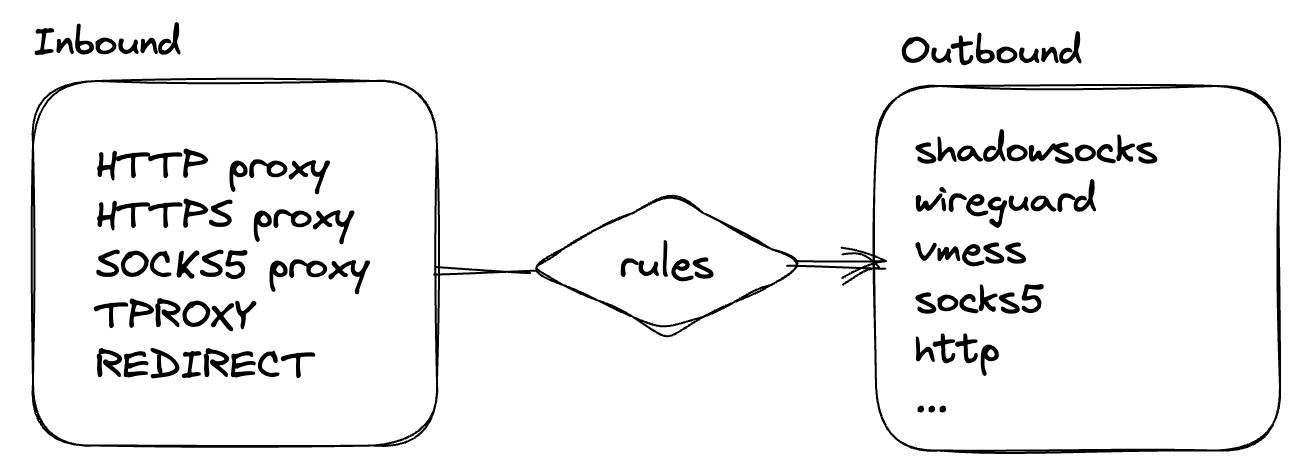Introduction
In this chapter, we'll cover the common features of Clash and how they should be used and configured.
Clash uses YAML, YAML Ain't Markup Language, for configuration files. YAML is designed to be easy to be read, be written, and be interpreted by computers, and is commonly used for exact configuration files.
Understanding how Clash works
Before proceeding, it's important to understand how Clash works, in which there are two critical components:

Inbound
Inbound is the component that listens on the local end. It works by opening a local port and listening for incoming connections. When a connection comes in, Clash looks up the rules that are configured in the configuration file, and decides which outbound that the connection should go next.
Outbound
Outbound is the component that connects to the remote end. Depending on the configuration, it can be a specific network interface, a proxy server, or a proxy group.
Rule-based Routing
Clash supports rule-based routing, which means you can route packets to different outbounds based on the a variety of contraints. The rules can be defined in the rules section of the configuration file.
There's a number of available rule types, and each rule type has its own syntax. The general syntax of a rule is:
TYPE,ARGUMENT,POLICY(,no-resolve)In the upcoming guides, you will learn more about how rules can be configured.
 Clash
Clash